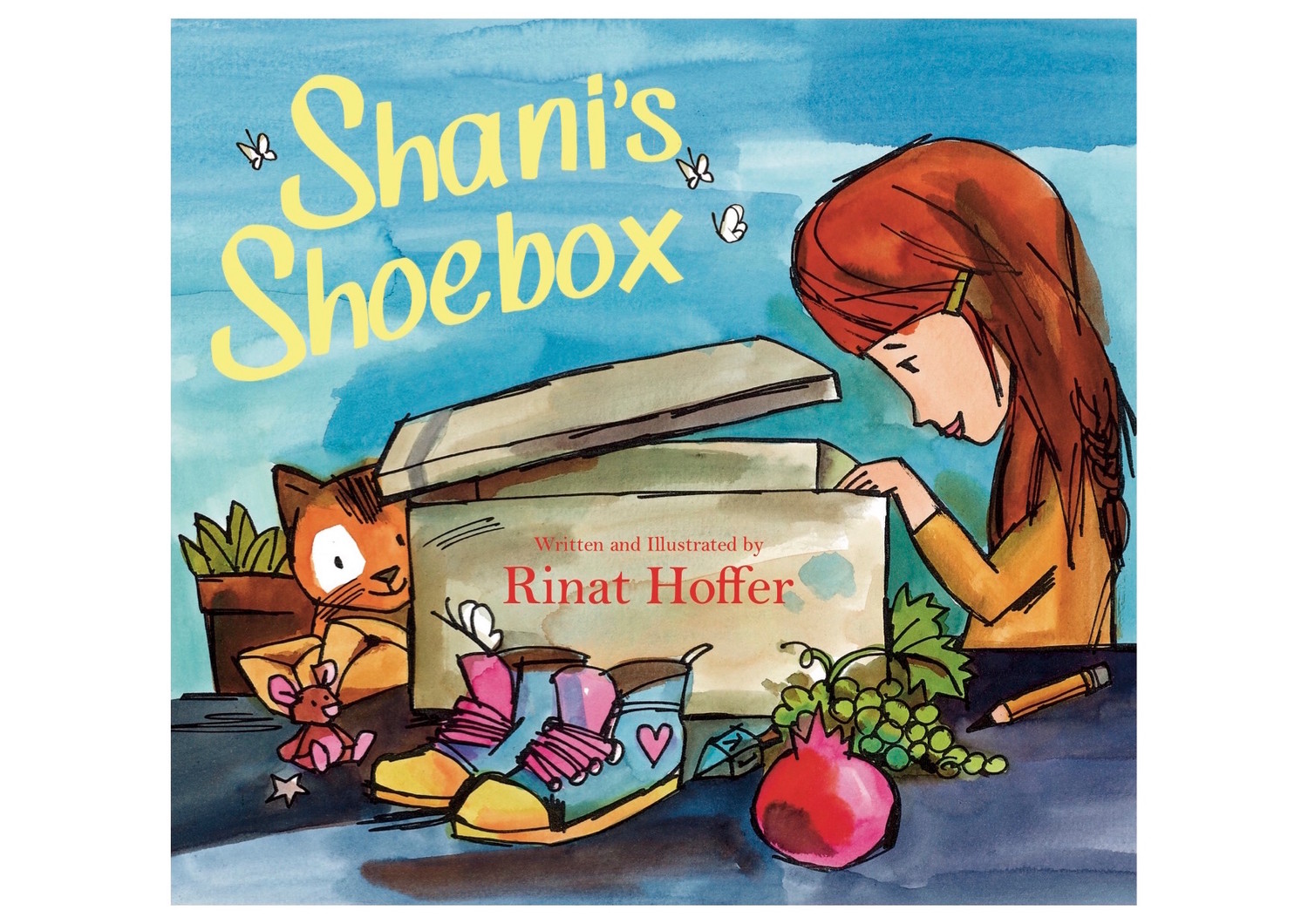For kids: Magical shoebox and animals aplenty
An African warthog to swinging orangutans, animals from all corners of the planet, a magical story about an ordinary shoebox, and a poem about the story of Creation are featured in new children’s books released in advance of Rosh Hashanah.
Shani’s Shoebox
Written and illustrated by Rinat Hoffman; translated by Noga Applebaum. Green Bean Books; ages 4-8
Prepare to be enchanted! “Shani’s Shoebox,” a gentle poem-story for Rosh Hashanah by the award-winning Israeli illustrator and children’s author Rinat Hoffman, will kick off the Jewish New Year on the right foot.
Shani’s “aba” surprises her with a pair of shiny new red shoes for Rosh Hashanah. Naturally, she tosses aside the ordinary-looking shoebox. “It was only a box after all, nothing more,” she says.
But on Yom Kippur, Shani finds the box hidden behind stuffed animals and the next day crafts it into a sukkah. During Hanukkah, a cat discovers the discarded box and uses it to stay warm in the winter. Season to season, the box takes on a magical quality, turning up in new guises and with new uses throughout a year’s worth of Jewish holidays.
The next Rosh Hashanah, when Shani’s father fills the box with a new pair of shoes — this time blue — Shani is reminded of the year’s adventures.
Hoffman’s colorful, animated illustrations draw in readers with vibrant energy. In one scene, as the family prepares the house for Passover, Shani is on a stool cleaning a mirror and her dad is sweeping. It’s refreshing to have a children’s story that depicts a father in everyday roles more commonly associated with moms, like buying shoes for his kids and cleaning the house.
Where’s the Potty on This Ark?
Kerry Olitzky; illustration by Abigail Tompkins. Kar-Ben; ages 1-4
Even on Noah’s Ark, the animals need to use the potty. Young kids will be delightfully surprised with this inventive spin on the biblical story of Noah, from the Book of Genesis. As Noah and his wife, Naamah, greet each of the animals onto the ark, Naamah makes sure they are comfortable.
“Be careful not to hit your head on the ceiling,” she warns.
The ark comes well designed, with big potties for the elephants and little ones for smaller friends. When a baby raccoon needs to use the bathroom, Mother Hen patiently guides the young one to learn how. The animals offer an empathetic lesson in taking care of one’s body, complete with a prayer. And off they sail on the ark as the rains begin.
Kerry Olitzky’s simple, lighthearted prose is paired well with Abigail Tompkins’s playful illustrations. The book makes a timely read during the High Holidays because the story of Noah is read in synagogues on the second Shabbat following Simchat Torah, when the cycle of reading the Torah begins anew.
Who’s Got the Etrog?
Jane Kohuth; illustrations by Elissambura. Kar-Ben; ages 4-8
In this brightly illustrated story for Sukkot, Jane Kohuth weaves a playful folk-like tale told in simple poetic verse. In her rural village in Uganda, under a bright and full milk-bowl moon, Auntie Sanyu is preparing for the fall harvest holiday when Jews build a hut called a sukkah where they eat, welcome guests and sometimes even sleep. Kids follow Auntie Sanyu as she decorates her sukkah and places a lulav, the bunch of green palm branches, and a bright yellow etrog, the lemon-like fruit, on a tray to be used in the holiday rituals by Auntie Sanyu’s animal guests. But Warthog loves the etrog so much he doesn’t want to hand it over to the lion, parrots or giraffe. A young girl named Sara intervenes.
The story comes to life in Elissambura’s boldly colored, striking collage-style illustrations. The back page explains the history of the Ugandan Jewish community called the Abayudaya, and a glossary explains about the sukkah and lulav and terms like “Oy, vey!”

 48.0°,
Light Rain
48.0°,
Light Rain 









